Parker-Harris Artifacts
-
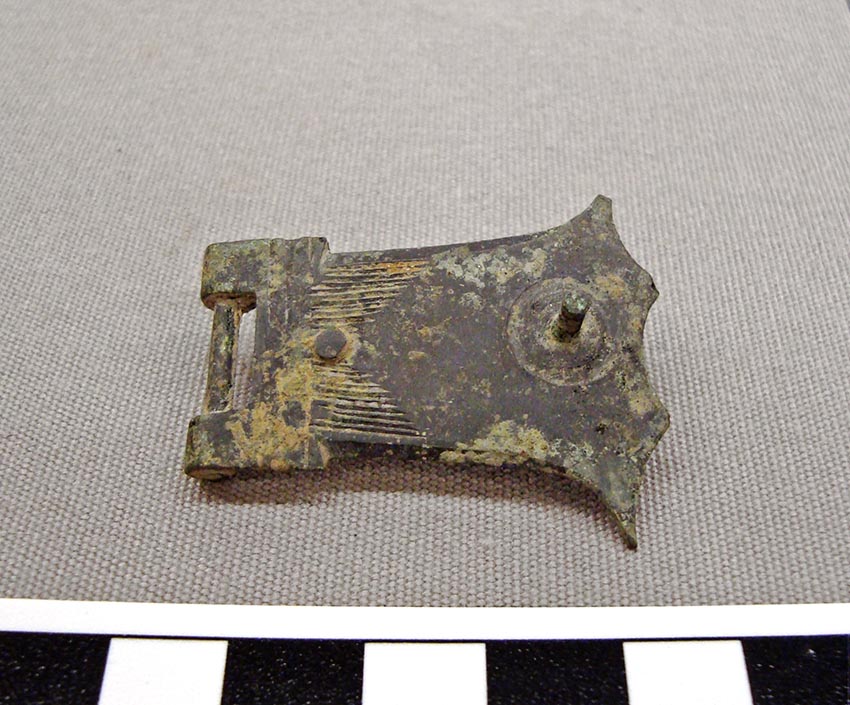
Book Hinge - Copper Alloy. While no evidence of the Parker's house was found during excavation, these small finds give an idea of the items the family would have used in everyday life.
-
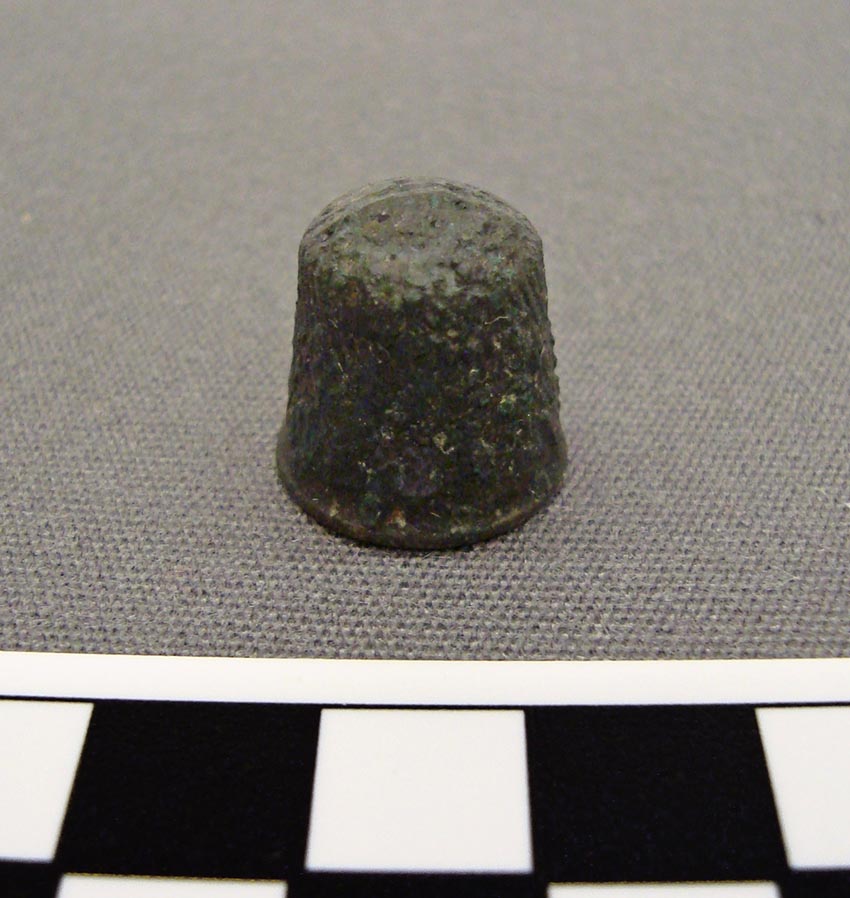
Thimble - Copper Alloy. While no evidence of the Parker's house was found during excavation, these small finds give an idea of the items the family would have used in everyday life.
-
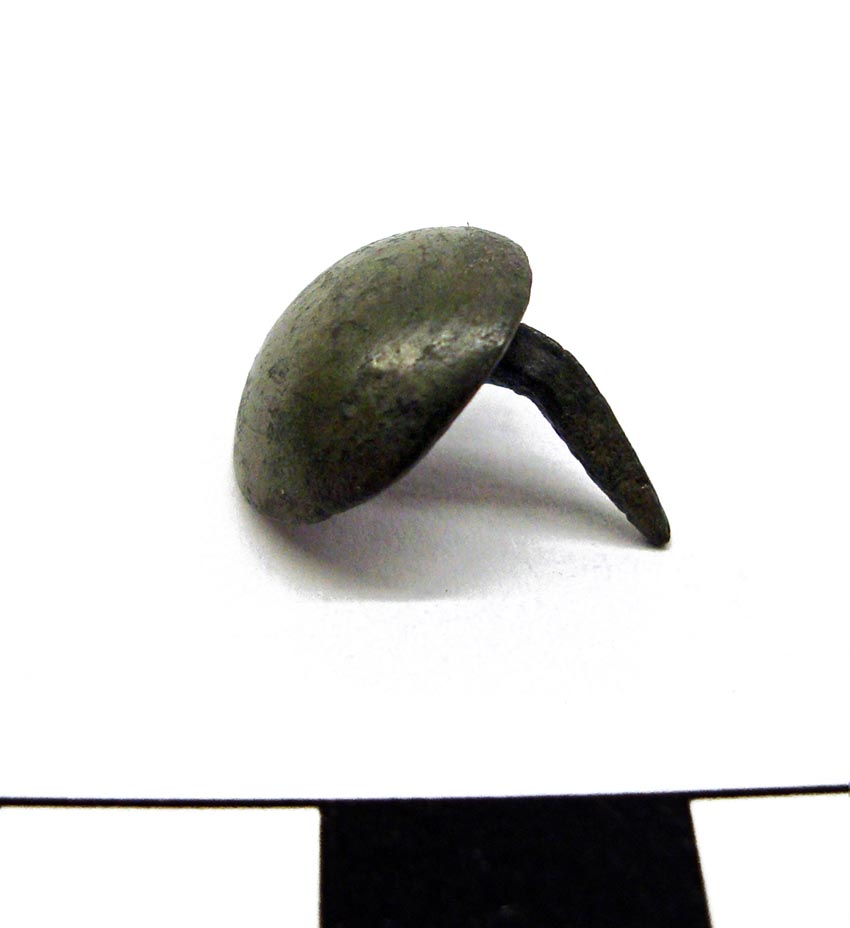
Tack - Copper Alloy. While no evidence of the Parker's house was found during excavation, these small finds give an idea of the items the family would have used in everyday life.
-
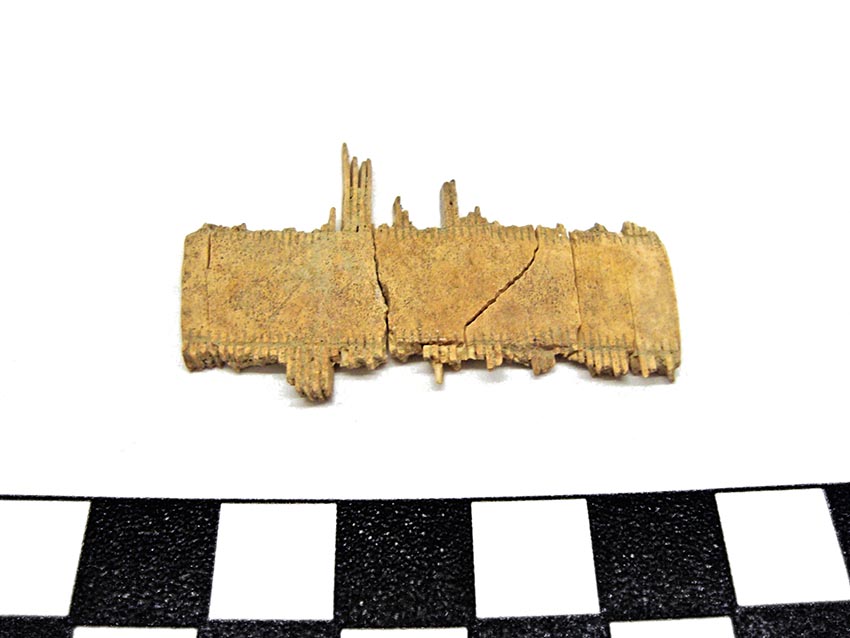
Hair Comb - Bone. While no evidence of the Parker's house was found during excavation, these small finds give an idea of the items the family would have used in everyday life.
-
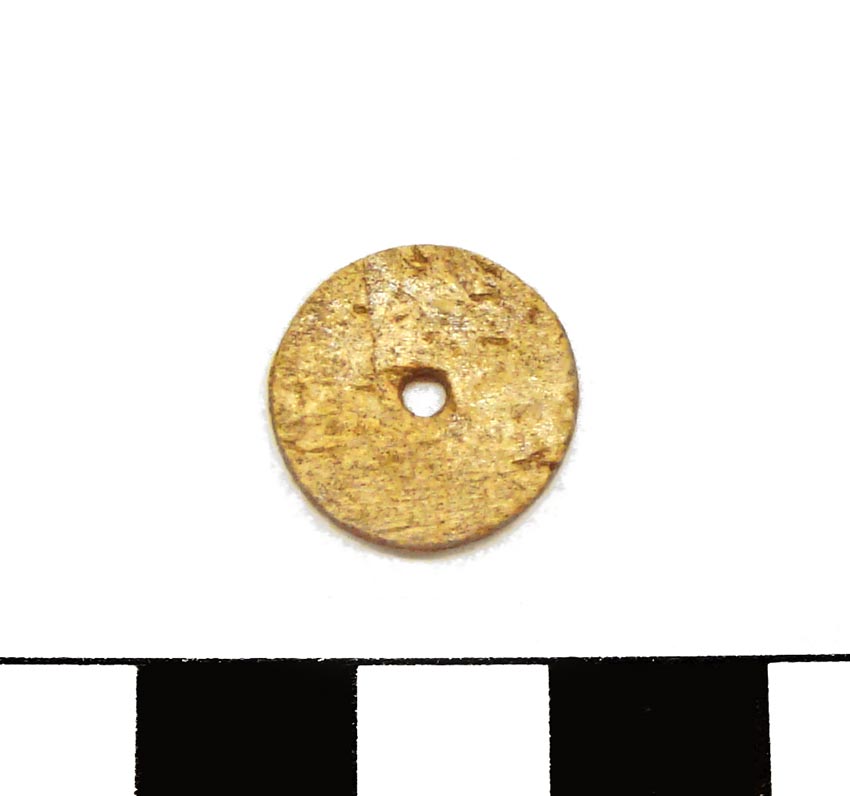
Button - Bone. While no evidence of the Parker's house was found during excavation, these small finds give an idea of the items the family would have used in everyday life.
-
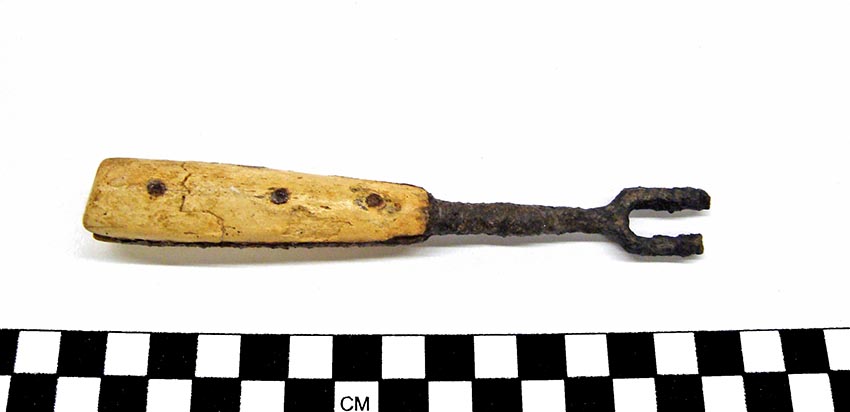
Fork - Iron with bone handle. While no evidence of the Parker's house was found during excavation, these small finds give an idea of the items the family would have used in everyday life.
-
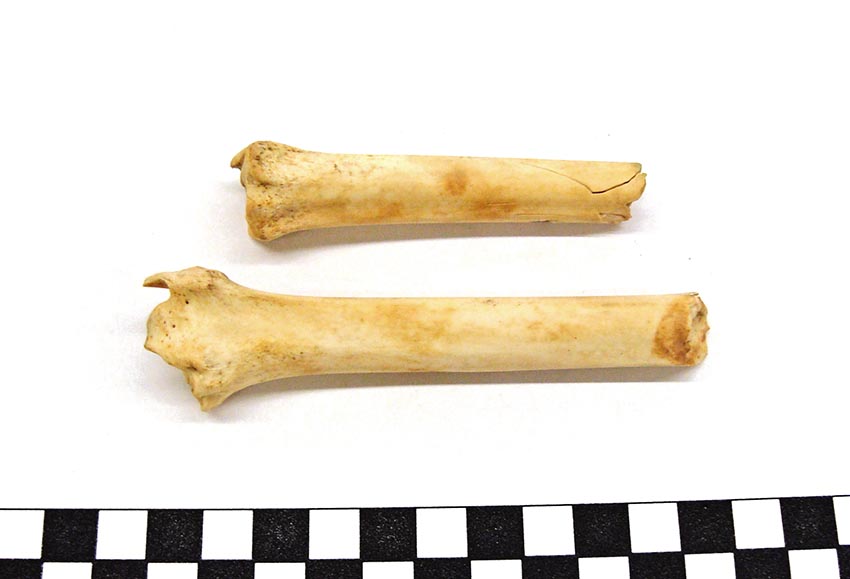
Sheep bones. These sheep bones are the remains of meals eaten at the Parker Harris site. Some of the bones exhibit cut marks from butchering.
-
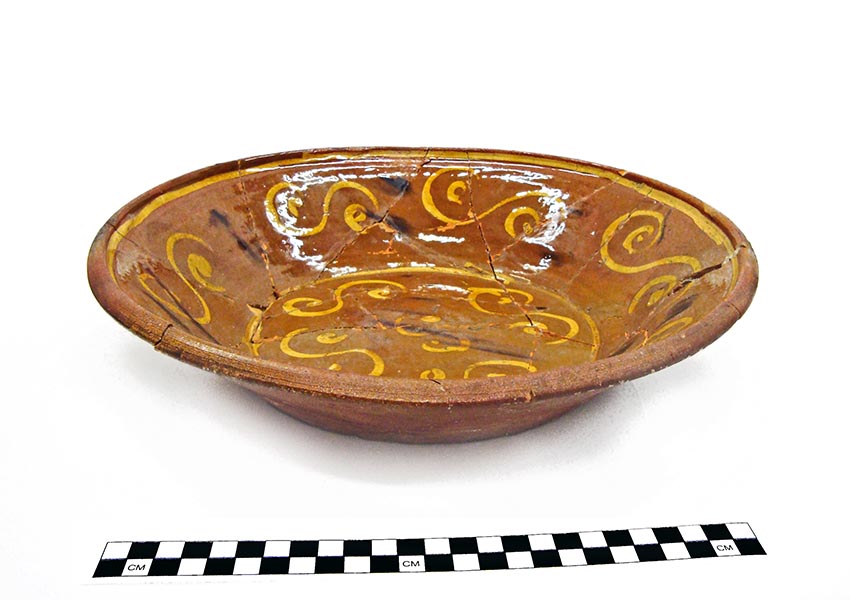
Slip decorated redware milk pan from Parker Harris site.
-
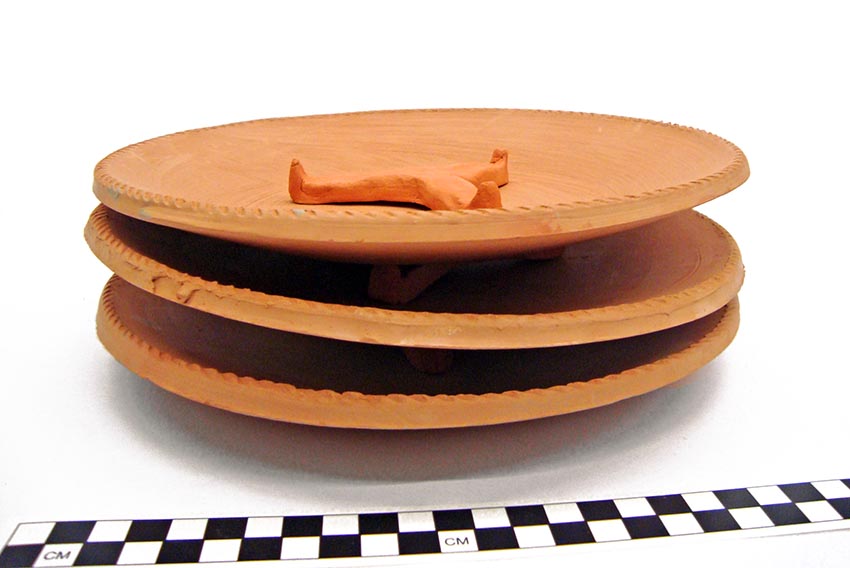
Reproduction unglazed redware plates and trivet kiln furniture.
-
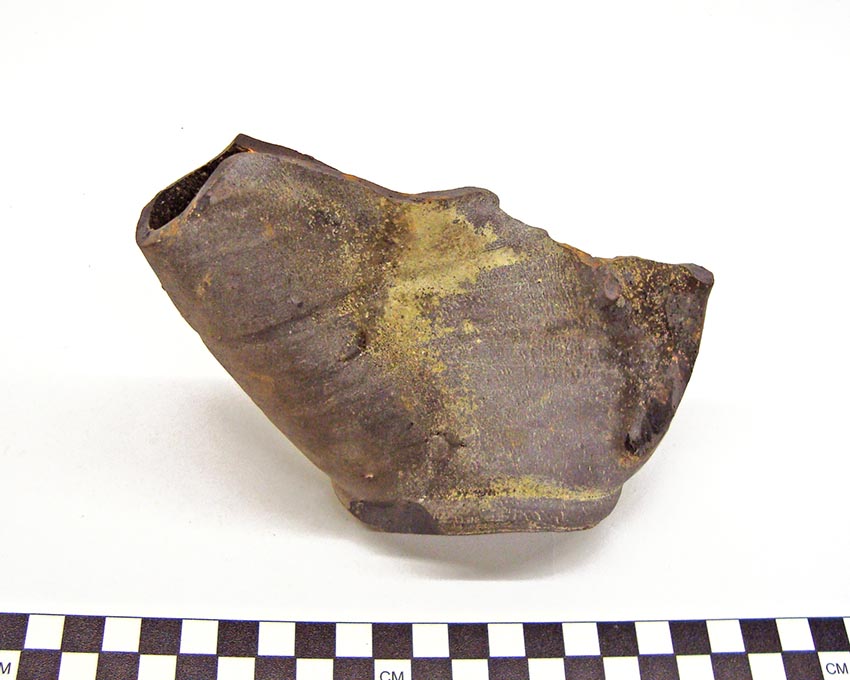
Collapsed unglazed redware bowl. Known as a wasters, spoiled vessels are typically created by over-firing or irregular heating within the kiln. Irregular firing can cause a vessel to collapse or cause kiln furniture to fuse onto the vessel.
-
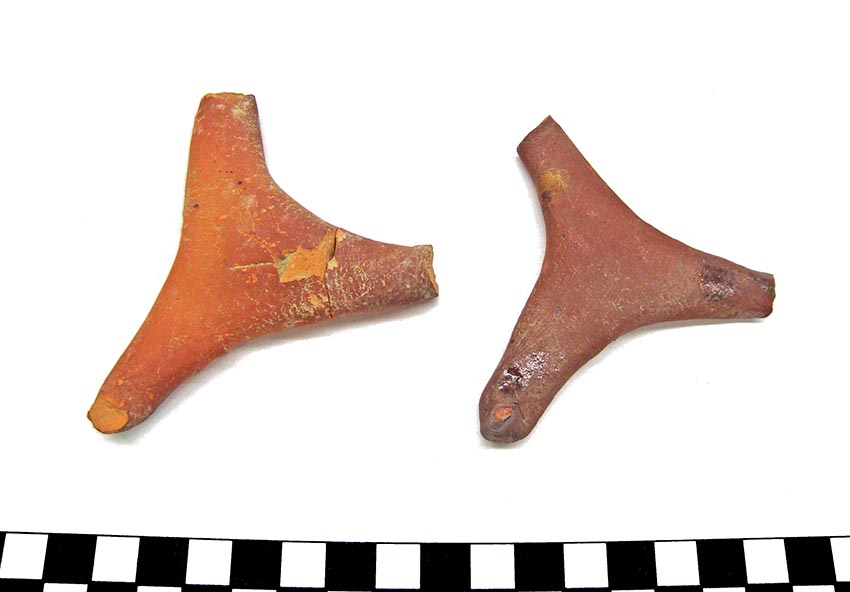
Trivets, also known as cockspurs or stilts - Earthenware. Potters used trivets to separate bowls and plates that were stacked in the kiln and to stack small vessels such as tankards. Still used today, trivets often leave a characteristic three-dot mark in a vessel’s glaze.
-
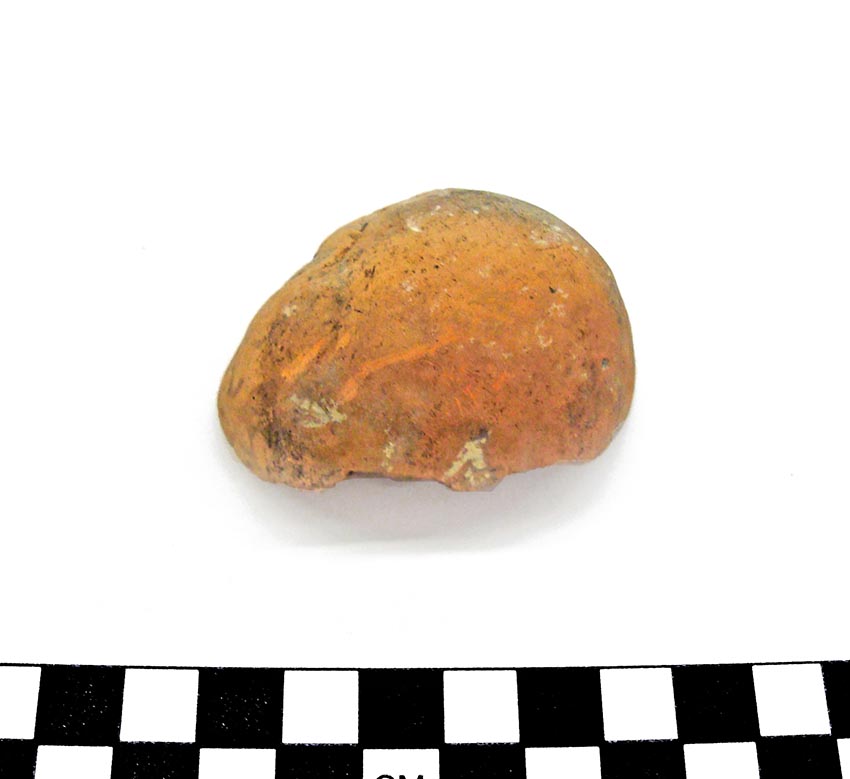
Kiln ball - Earthenware. Crude, unglazed clay balls separated items in the kiln and served as stackers for large pots.
-
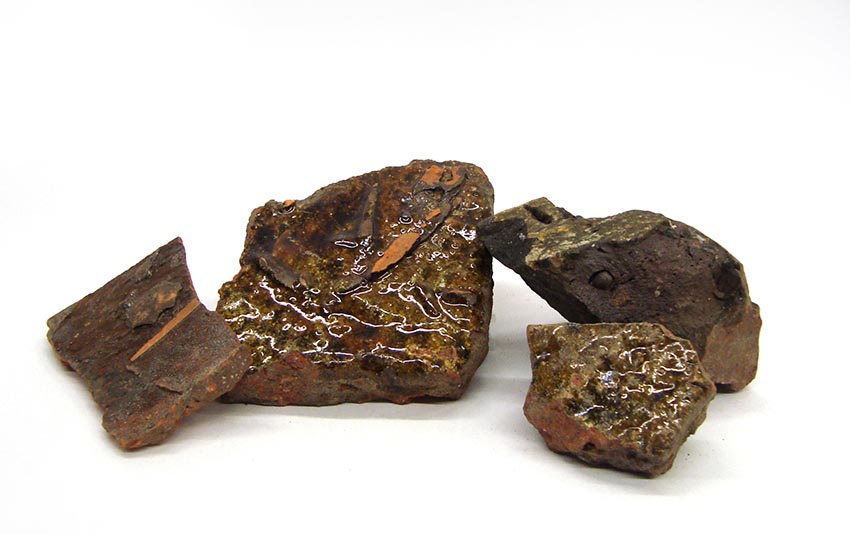
Setting tiles - Earthenware. These flat redware slabs covered shelves and stacking surfaces in the kiln. Wares were stacked on them using tiles or stilts, which often stuck to the tiles. Excess glaze frequently dripped on the tiles, as seen here.
-
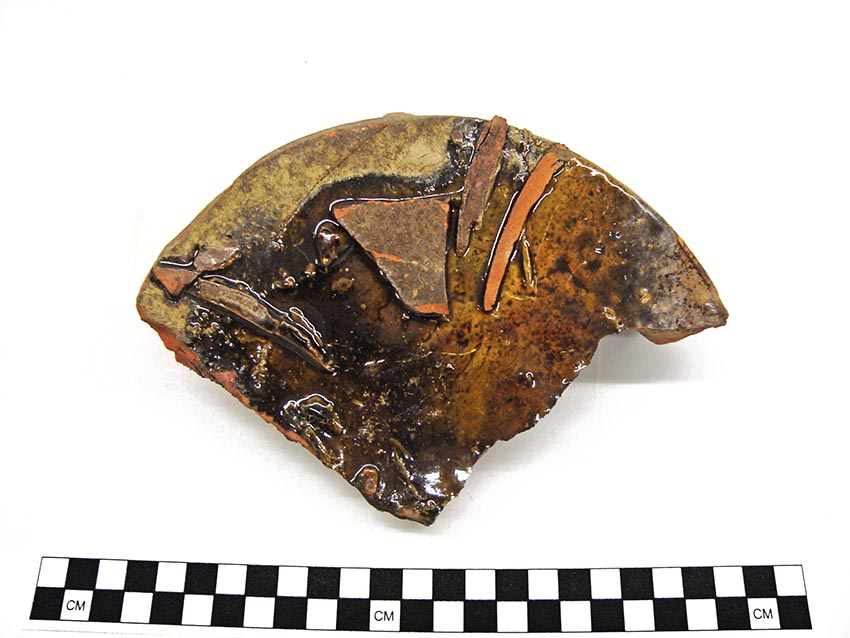
Setting strips - Earthenware. Rolls and strips of clay elevated vessels on setting tiles. The large storage jar base exhibited here bears the linear marks of some strips that adhered to the glaze.
-
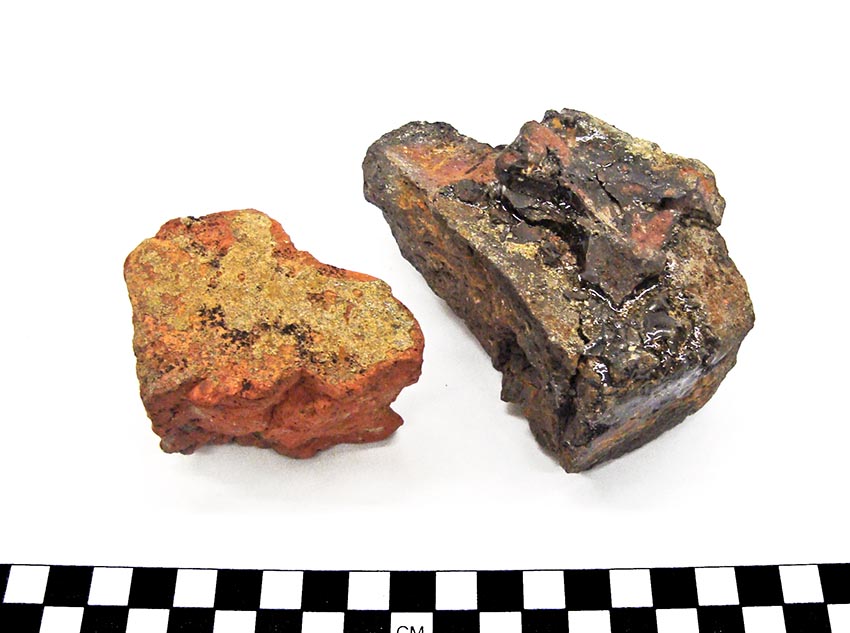
Kiln brick - Earthenware. Larger and thicker than household or chimney brick, these bricks made up the structure of the kiln. They are typically dark red or black, heavily porous, and covered with glaze drippings. Whole kiln bricks are distinctive in that they measure 9 x 4 x 2.5 inches.
-
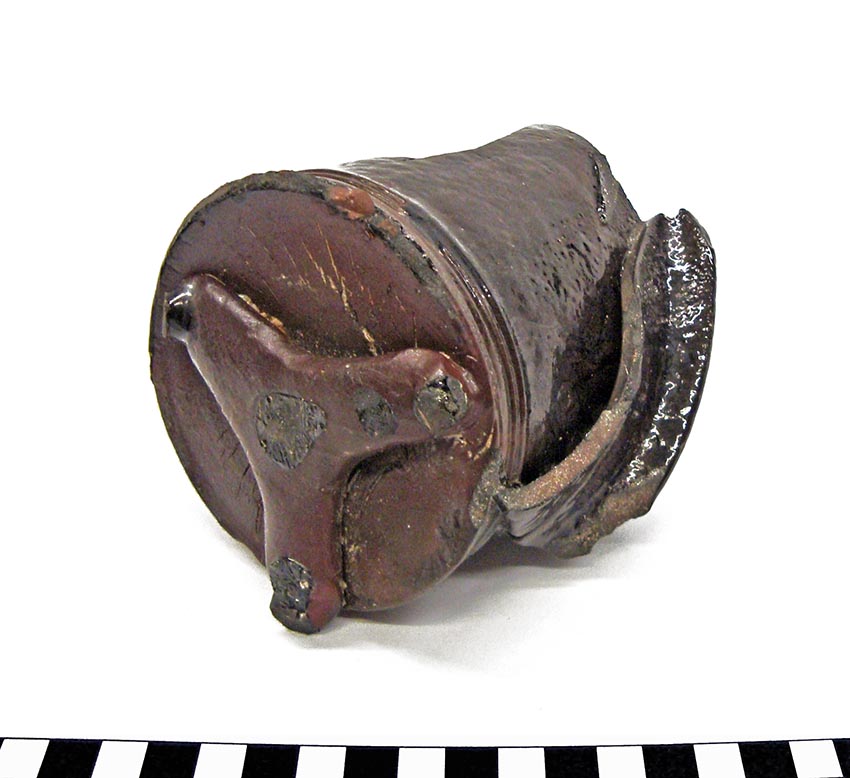
Glazed redware tankard waster. This tankard was over-fired. Not only has the vessel partially collapsed, but the trivet used to stack it in the kiln has fused to its base. Unique artifacts such as this have helped archaeologists to better understand pottery production.